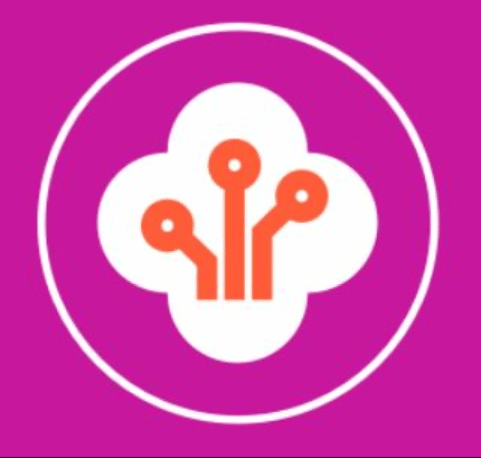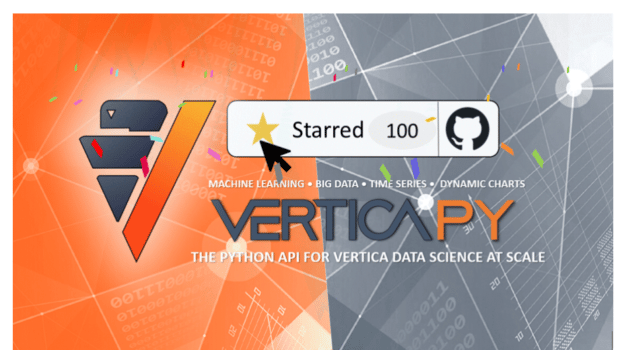
When you look around your office, or when you look at the faces on your Zoom calls, do you see an even mix of men and women? If yours is like most organizations in the technology sector, women occupy only about 25% of the jobs, according to a recent CIO Magazine article. That stat is easily confirmed by any number of searches you make on the topic of gender equality in the tech industry. So, your answer is almost certainly “No, I see far more men.”
While “women make up 47% of all employed adults in the US,” and STEM (science, technology, engineering, mathematics) related jobs have increased 79% since 1990, women are far less represented than men in tech positions. That’s partly due to the lack of female enrollment in STEM curricula in higher education, despite efforts over the past two decades to attract more women to technical training and employment.
Why should we pay attention to gender imbalance in the workplace? There are several strong reasons. And while fixing the imbalance is far beyond the scope of this article, it’s important for everyone to understand that ~25% of their workforce has a very different experience from the other 75%. For one thing, it’s been more of a challenge for women in tech to establish their careers. In their college courses, they found themselves in a distinct minority compared to men, and in their first attempts to find work in a field dominated by male applicants, many women struggled with biased attitudes that seemed to land more men than women in technical jobs.
Those attitudes may be changing, as more men become aware of the challenges women face in tech careers – like having to work harder than their male colleagues, to prove their capabilities; like having to be doubly sure they’re right whenever making an assertion about any issue, because if wrong, their gender will be to blame. These assumptions are not entirely a thing of the past.
But even if attitudes are improving, this doesn’t change the fact that women frequently, still, find themselves the only female in a meeting. They may be uncomfortable talking to a male boss about micro-aggressions – often subtle, often unintended hostilities – that seem to be gender related. How does a young woman in her first job cope with these issues? How can she find a mentor, someone with experience, who can say “I know what you mean, let’s talk,” when comparatively so few women are available?
The value of diversity
Before digging into the experience of being a woman at a high-tech company, we need to answer an essential question: Why, in the first place, is gender diversity good for an organization? Joy King, formerly Vertica’s VP of Products and GTM Strategy, expands the question to “Why is diversity in all its forms good for an organization?” Here’s her answer:
“Diversity is the key, whether that’s gender, race, age, or any category that’s part of an individual’s identity. Consider age, because age diversity is something all of us in the workplace will experience sooner or later, regardless of gender. If you’re in your 50s or 60s, do you have a different way of experiencing the world from when you were in your 20s? Most people would say yes. Do you interact with technology differently from people who are in their 30s? Of course you do.
“That same change in perspective, what you see as an opportunity now, versus a hindrance then… Well, take that same understanding and apply it to gender, or race, or ethnicity. Those perspectives are different, and how women experience, or see, or imagine a solution to a problem is fundamentally different from how men might approach the same problem. That diversity is what gives industries the opportunity to solve problems in the most effective way. To address customers effectively, for example.”
When an organization promotes diversity in its employee base, it’s more likely to create products and services that reflect the needs of its marketplace. And that makes for a stronger company. This isn’t just an opinion. A 2018 article in Forbes notes research from McKinsey and Company, and others, showing how companies with greater gender diversity “are 21% more likely to experience above-average profitability, and companies with more culturally and ethnically diverse executive teams were 33% more likely to see better-than-average profits.”
Diversity in an organization not only reflects the make up of your target customers, it also benefits your business’s bottom line.
The Micro Focus dataGALS organization
In 2013, an employee resource group (ERG) at Vertica was created called dataGALS (originally VertiGALS) to support women in technical roles, or women interested in getting involved in tech. When Micro Focus acquired Vertica, the larger organization realized dataGALS could support women across the company.
dataGALS has had from the beginning two related goals: to help women in their engineering careers, and to raise awareness across the larger org about the needs to be inclusive as the company grows. “It also helps us in our recruitment and retention efforts,” says Deb Chatigny, Senior Manager for Information Development and UX at Vertica, and Global Lead for DataGALS.

The recently designed dataGALS logo.
The mission statement on the internal dataGALS website reads: “dataGALS supports women working in tech and aims to build a more equitable, inclusive, and diverse workplace through educational webinars, panel discussions, book clubs, and many other events. The group is open to all employees who want to empower and support women working in technology.”
The Vertica organization has long understood the need among women for support in their careers, and to raise the awareness of unconscious biases that can creep into meetings and informal conversations. Nevertheless…
“Gender stereotypes definitely exist,” Deb says. “For instance, if a women has a strong personality, she may get labeled as bossy or difficult, whereas a man with the same traits may be considered an assertive leader. If you’re quiet and smile a lot, many people associate that with being feminine. So one of the things that dataGALS is able to do is help women share these stories, as well as offer strategies and guidance on ways to manage some of these situations, especially when a woman feels uncomfortable going to a male manager or colleague with such issues.”
“Generally women won’t speak up as much in meetings,” Deb continues. “There’s often an assumption that the person who is loudest and speaks the most has the biggest influence over a decision. So women need to find their voice, advocate for themselves. There are also studies that show women are far more likely to leave the tech field than men, partly due to a lack of female mentors. A network of women, like we have in dataGALS, who are aware of these issues offers a lot of power to help with these and other needs.”
We might imagine that, given the higher education most employees have acquired for their roles in high tech, that this particular workforce is more enlightened on matters of diversity and equality for women. But not necessarily. “It depends on the company,” Deb Chatigny says. “Increasingly businesses are aware of gender pay gap issues and hiring practices, so the opportunities for equality are probably better than they’ve ever been. But people are creatures of habit, and organizational habits also take time to change and evolve.”
Different assumptions and behaviors among men and women
A well-established finding may at first strike men as funny, or embarrassing, but the implications are deadly serious. In today’s online job postings, women statistically won’t apply for a job unless they have 100% of the skills listed in the description, whereas many men will apply even if they have as few as 60% of those skills. “That means that some women are missing opportunities because they’re not aware how their own behaviors are limiting their careers,” Deb says.
Amy Miller, Vice President, Vertica Customer Success, a founding member of dataGALS and the group’s new executive sponsor, describes a classic assumption some men make regarding women in tech. “A few years back, we had a program that rotated our software engineers through tech support, assigning them support roles that were related to their specialty. Questions about the Vertica Optimizer, for example, were given to a female engineer who worked on the Optimizer. On one occasion, a customer texted the help desk, and received a reply: ‘Hello, I’m ____ and I’m here to help!’ Based on the name, the customer said ‘I don’t want to talk to you, I want to deal with someone who knows what they’re talking about.’ The customer didn’t realize that the help person was actually the one who wrote the code!
“Now, we still use first names but we also say ‘Hi, I’m an engineer. How can I help you?’ Customers are immediately more respectful, more polite, because they know they’re talking to the right person, male or female.”
Amy adds: “You know, some men are simply unaware of gender diversity, or the lack of it. They’re like ‘Oh, there’re no women in the meeting room? I didn’t notice.’ Biases start at an early age. We need to make sure the experience of primary education, then high school, helps more women see the possibilities they have in technical roles – that eventually, the skill sets they have when leaving college prepare them for success.”
When dataGALS first launched, a number of male employees attended the meetings, and they came to better understand the perspective of their women colleagues. “And it’s made a difference,” says Amy. “I think the male leaders in this organization make sure that women share their side of issues, that they’re not just sitting at the table, but sharing their opinions. Instead of waiting for women to speak up, I see more male leaders consciously asking women to speak up.”
The benefit? That helps everyone at the table grow more comfortable at meetings. The more opinions that can be shared, the faster decisions can get made, or at least the clearer problems can become.
Finding and hiring new talent
The Vertica organization prides itself on making sure job interview panels are diverse – “not in a contrived way,” says Amy Miller, “but just to let candidates see what Vertica looks like. After all, candidates are very much interviewing us as well.”
“We’re in the same competitive space for top talent as any other tech company,” adds Deb Chatigny. “A recent hire right out of college told me that, in finding her first job, one company had her speaking only to white men. She didn’t feel at all represented on their interview panel, and decided she wasn’t interested in that role. At Vertica, it mattered to her that her first and second interviews included women on the interview panel.”
Despite the push in higher education for more women to pursue careers in STEM, it’s easy for women to become discouraged as they take the first steps into the curriculum. “If they don’t see themselves represented,” Deb says, “or don’t seek out the support they need, it’s hard for them to see the path forward. It can be very discouraging.”
“And that makes it hard to increase the number of women in technical roles,” notes Amy. “If you’re looking at a pool of candidates, and five are women and twenty are men, you try to not be biased according to their genders or ages. But your pool is small, and it makes hiring more difficult if you’re trying to balance for diversity.”
Not only is hiring women a potential difficulty, the women companies are able to hire may find it hard to settle into a role best suited to them. Deb points out that many younger employees have not yet worn many hats, and don’t know the path to move laterally to a different role, or to move up in an organization. If women, especially younger women, don’t understand all the roles related to their own, they might prefer to leave for another organization rather than switch to something that’s right next door. “Someone in HR for instance may not know how products are priced, or how sales roles work, or how to explore other potential career paths, etc.,” she explains.
So making these roles clear can help employees understand new opportunities as they arise. “With dataGALS we’ll soon be doing a career exploration series, where we’re interviewing talented people in different roles,” says Deb. “This should shed some light on both the intricacies and the opportunities across different job roles, and potentially establish some formal mentoring program.”
Larger implications for gender diversity
Joy King describes a genetic advantage she believes women offer a workforce. “Women are genetically designed to care about the future, to protect their families, to protect people, to protect the environment – because that is what protects the future. If we can tap into that, it will attract women to the world of tech … in every industry.”
“I live in North Carolina, and we go out to the mountains all the time. In the mountains, black bears are very prevalent. No worries, because they’re not at all aggressive. Except if you happen to encounter a mama bear when she is with her cubs. Be very careful! Because that black bear may eliminate you if she senses any risk to her cubs. That’s because she is genetically designed to be calm and supportive, except when you put the future generation at risk.
“I think of this as a genetic advantage. My problem with some of the discussion around women in tech is that we start by assuming women are at a disadvantage. They’re in the minority, aren’t trusted to code, and more. I think we should focus on the advantages women bring to the workplace. Women are genetically designed to protect, whether we like it or not, and that safeguards the next generation. This instinct for nurturing is an advantage.
“Also, because of childbirth, women are designed to have a higher pain threshold. Not every woman, but generally speaking, when you consider stress, anxiety, nervousness, these impact blood pressure, can give you headaches, all those things. Women in tech should know that they can handle stress, that they can succeed in any role if they set their minds to it. They should think ‘I can make this world a better place and be driven by a passion for that because it’s in my genes!’”
The advantages of passion
In a recent interview posted as a Rocket Software “Women Leaders in Technology Virtual Coffee Talk,” Joy King offers some strong advice for women pursuing a career in tech: Find your passion.
“Look inside,” she says, “and think, what does fire you up? What excites you, makes you feel like you’re making a difference? Tap into that, because nothing else is going to get in your way. If you can find your passion, nothing will stop you. And that’s professionally and personally.”
For a long time, Joy’s passion has centered on the power of data, and she cites Climate Corporation as one example. “Data analytics in the area of agtech helps optimize crop production to feed the future, despite shrinking farmland,” she says. Climate provides farmers with a comprehensive, connected suite of digital tools aimed at mitigating risk and optimizing farm productivity. Bringing together seamless field data collection, advanced agronomic modeling, and local weather monitoring into simple mobile and web software solutions, the Climate FieldView platform gives farmers a deeper understanding of their fields so they can make more informed operating decisions to optimize yields, maximize efficiency, and reduce risk.
“And the world is richly benefiting from personalized pediatric cancer treatments using human genome analytics,” Joy adds. “The ability to analyze each individual’s genetic palette – this is work being done to personalize treatments for the youngest members of our population. All of us get prescriptions from the doctor, based on generic understanding of medical conditions. But what I learned from my exposure to genome analytics, through cancer treatments for children, is that analytics can personalize treatment, and that it can save lives.”
There’s probably no better example of caring passionately, and effectively, for the future.






